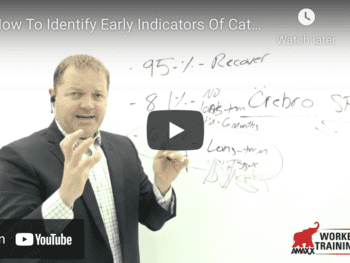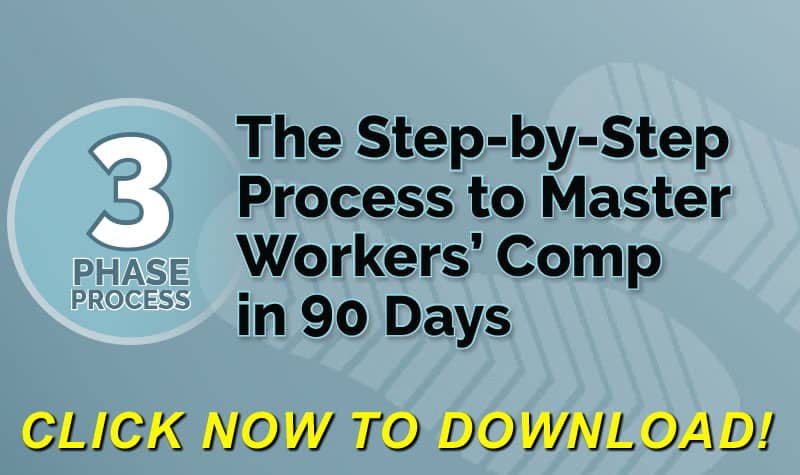An injured employee gets indemnity, that is monetary compensation, for lost wages. Indemnity benefits replace wages while the employee is not able to work because of the work-related injury or illness.
The indemnity benefits continue as long as the employee is medically unable to work, with limitations in some states on the maximum number of weeks. About half of all the dollars spent on workers compensation claims are used to pay indemnity benefits.
Waiting Periods
All jurisdictions have waiting periods before indemnity periods are paid. Most jurisdictions have a seven-day waiting period before indemnity benefits start. However, a few states have a three-day waiting period. If the employee is able to return to work without any limitations within the waiting period, no indemnity benefits are paid.
Click Link to Access Free PDF Download
Different Types of Indemnity Benefits
Generally, there are four types of indemnity benefits. The benefit type depends on whether the illness or injury results in a temporary or permanent disability and whether the injury is total or partial.
Temporary Benefits
- Temporary Total Disability (TTD)
TTD is the most common indemnity benefit. The injured worker receives a part of the average weekly wage until the employee is able to return to work in modified or full time duty. The amount of TTD has an upper limit cap and a minimum amount.
- Temporary Partial Disability (TPD)
A treating physician may determine that the employee can return to work but only for a limited amount of time per day. This is when the TPD benefit comes into play. TPD is paid until the employee reaches maximum medical improvement (MMI) or is able to return to work full time, whichever occurs first. Some jurisdictions place limits on the number of weeks (or years) an employee can collect TPD.
Permanent Benefits
When the employee’s treating physician determines that the employee has reached MMI, the physician determines the amount of permanent disability, if any, the employee suffered due to the injury
- Permanent Partial Disability (PPD)
A schedule of injury values is used for the complete loss of a body part in about 40 jurisdictions. Examples of scheduled injuries would be the complete loss of eyesight in one eye or the amputation of one hand. In some jurisdictions the PPD benefit is paid to the employee as a set dollar amount for the complete loss of the body part. The amount of the PPD indemnity benefit may be a percentage of a body part or a percentage of the whole body.
- Permanent Total Disability (PTD)
When a treating physician determines that the employee will never be able to return to work, the employee becomes eligible for PTD benefits. In cases where the employee is rated as 100% disabled to the whole body, PTD is almost automatic.
Determining PTD is less clear when the employee has suffered severe injuries and is unable to return to work for that employer, but is not classified as 100% disabled. The nature and degrees of physical impairment, the employee’s educational level, the employee’s age, and the employee’s ability to be retrained for other suitable work, plus the availability of the other suitable work, are all factors in the determination of PTD.
The amount of PTD varies among jurisdictions. In some jurisdictions the PTD rate is the same as the TTD rate. In other jurisdictions the PTD rate is lower than the TTD rate and is a percentage of the TTD rate.
PTD benefits are paid until the employee is able to assume work in another field, or until the jurisdiction’s maximum number of benefit, weeks is met in most jurisdictions. In other jurisdictions, PTD benefits last until death or until the employee reaches his full social security age.
FREE DOWNLOAD: “Step-By-Step Process To Master Workers’ Comp In 90 Days”
Benefit Calculations
In most jurisdictions, the disability benefit is 66.66% of an injured employee’s average weekly wage. Usually, the amount paid for TTD is based on a formula of 2/3rds multiplied by the employee’s average weekly wage (AWW). Some jurisdictions use 75 or 80% of an employee’s net pay to compute the AWW. Most jurisdictions use the previous 52 weeks as a time frame to calculate the AWW, but some states use the prior 13 weeks or the prior 26 weeks as the time frame.
TPD: The TPD amount is calculated by multiplying the AWW by the amount allowed within the jurisdiction by the fraction of the day the employee is unable to work. For example, if an injured employee can return to work 4 hours per day but before the injury was working 8 hours per day the formula would be 4 hours divided by 8 hours =1/2. If the AWW was $900 per week before the injury and the state statute allows the employee to collect 2/3rds of his AWW, the TPD rate is calculated as $900 X 2/3 X 1/2 = $300. This injured employee on TPD would collect half his normal wage or $450 plus his TPD of $300 for a total of $750 per week.
Collecting Indemnity Benefits While Working Another Job
If the employee is able to do similar work for another employer the employee is no longer medically unable to work and temporary indemnity benefits should cease. A possible exception to this would be for PPD benefits where the employee is unable to resume a manual labor position with the employer where the injury occurred, but locates less strenuous employment with another company.
Author Michael B. Stack, CPA, Director of Operations, Amaxx Risk Solutions, Inc. is an expert in employer communication systems and part of the Amaxx team helping companies reduce their workers compensation costs by 20% to 50%. He is a writer, speaker, and website publisher. www.reduceyourworkerscomp.com. Contact: mstack@reduceyourworkerscomp.com.
©2013 Amaxx Risk Solutions, Inc. All rights reserved under International Copyright Law.
FREE DOWNLOAD: “Step-By-Step Process To Master Workers’ Comp In 90 Days”














